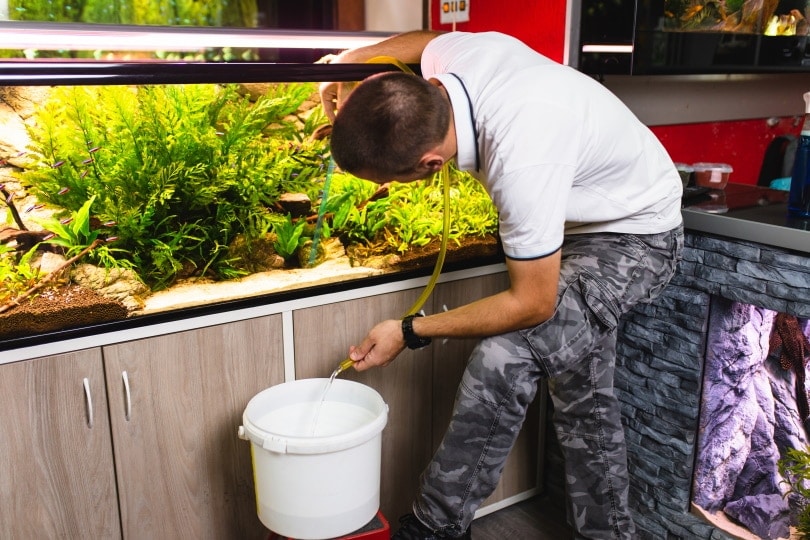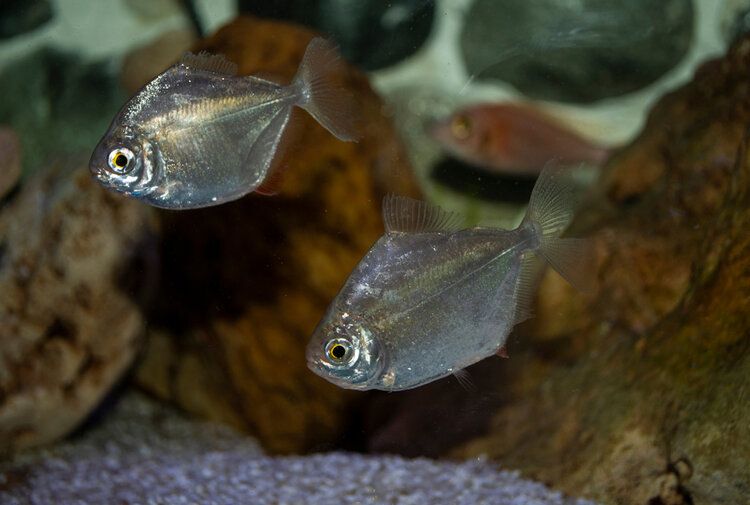Fish Tank Cycling & New Tank Syndrome: Understanding & Preventing Them

Updated on

It is recommended to cycle your tank before you get a goldfish so the water parameters have evened out before any live animal is put in. This is called the “Fishless Cycle” and makes the water safe to add live fish to.

What is Fish Tank Cycling?
Cycling involves first decorating the tank (adding gravel, arranging plastic or live plants), filling it up with treated water, and running the filter for a long period of time. The process will usually for 4-6 weeks under normal conditions. Using medications, changing the temperature drastically, and adding water that has not been treated with a product that removes harmful chemicals in the water will inhibit the progress of cycling the tank by killing the good bacteria needed to make a tank established.
Ammonia must be added to get a good bacteria colony established. Some fish keepers simply drop in a pinch of food daily as though they were feeding live fish, as uneaten food quickly produces ammonia. They execute regular water changes weekly along with this process.

Feeder Fish Cycling
Others purchase inexpensive “feeder fish” (small comet and common goldfish) to produce the ammonia they need, throw them in the uncycled tank, and wait for the water parameters to become safe for goldfish. This method, while effective, does cause the feeder fish themselves to experience the dangers and the discomforts of an uncycled tank and usually results in death.
A tank that is not cycled completely or at all will cause a goldfish to undergo new tank syndrome. A fish that is suffering from this condition usually displays unusual behavior such as bottom sitting (resting on the bottom of the tank languidly), gulping air at the surface of the water, flashing (darting around wildly and itching on objects/gravel in the tank) and exhibiting red burns on the body. The gills may appear brown or lilac in color as a sign of ammonia poisoning. Sometimes, the scales of the goldfish may “pine cone” as a sign of dropsy.

New Tank Syndrome
Many times a fish experiences mysterious sudden death as result of new tank syndrome. There are some things goldfish keepers do that can cause a glitch in the cycling development of a tank. For instance, using tap water straight from the sink to clean the tank’s gravel or filter media can result in a mini-cycle – when ammonia or nitrite spikes as a result of beneficial bacteria being eliminated. Stocking goldfish in the tank slowly can help to prevent overloading the good bacteria, as well as doing weekly 50% water changes to remove pollutants.
The best way to avoid new tank syndrome is simply by prevention – cycle the tank first before adding any fish. It is also critical to remember not to medicate fish that are showing signs of new tank syndrome, as this only causes the water quality to deteriorate even further.
Featured image credit: MOUii, Shutterstock









